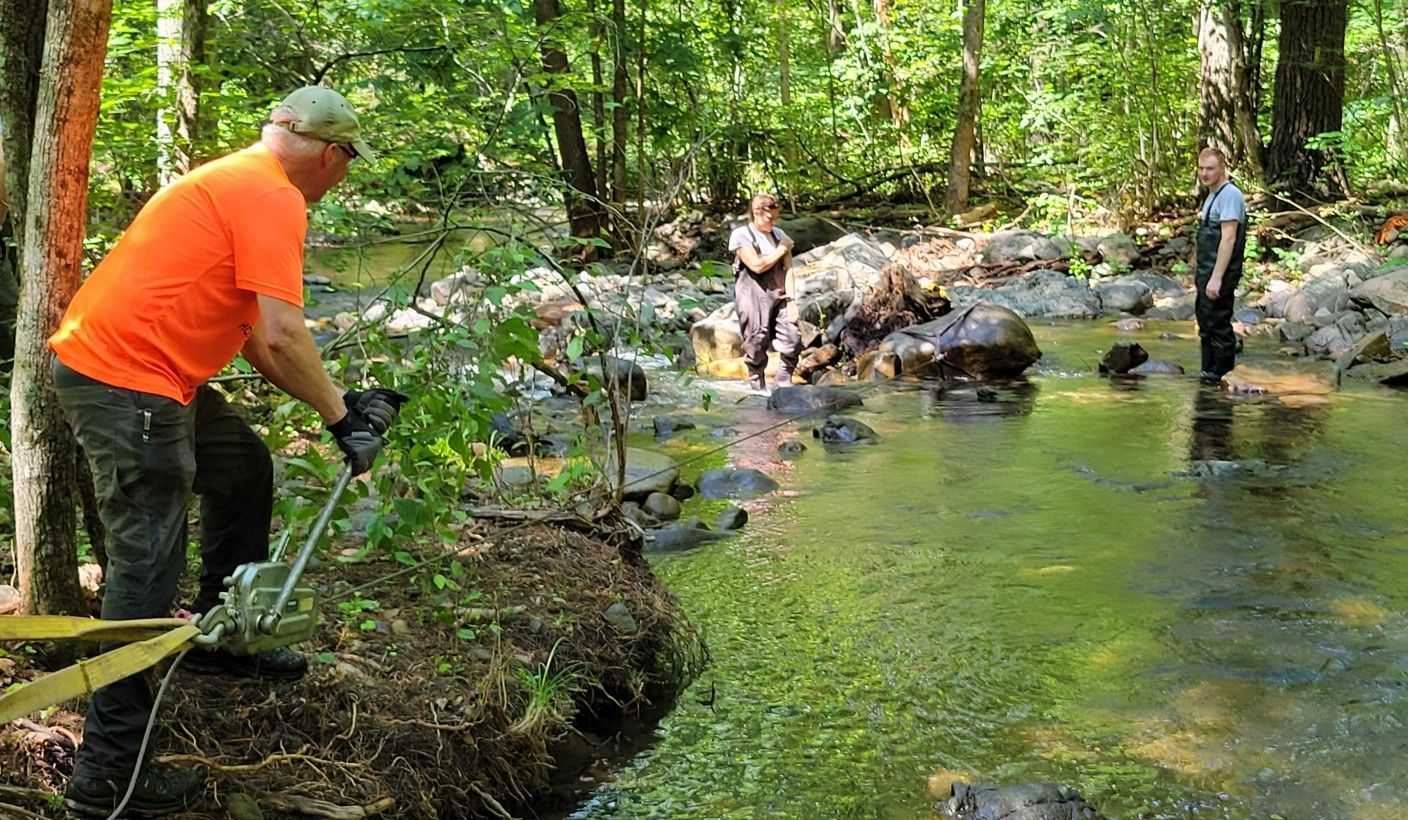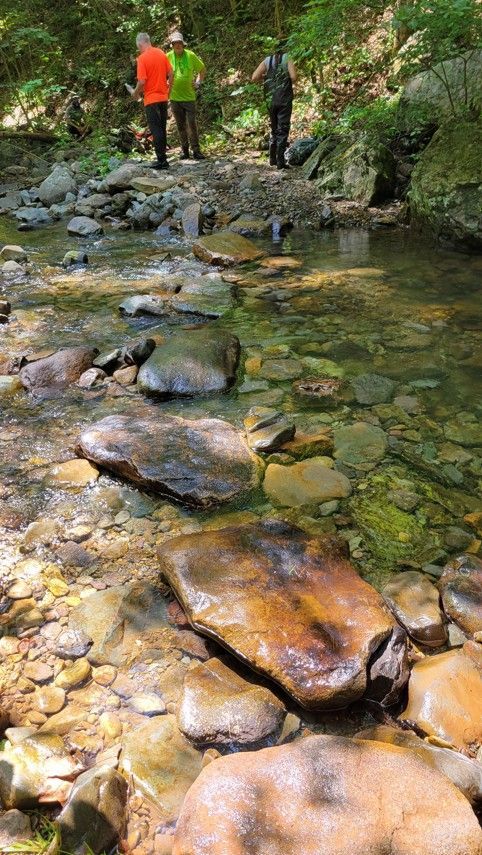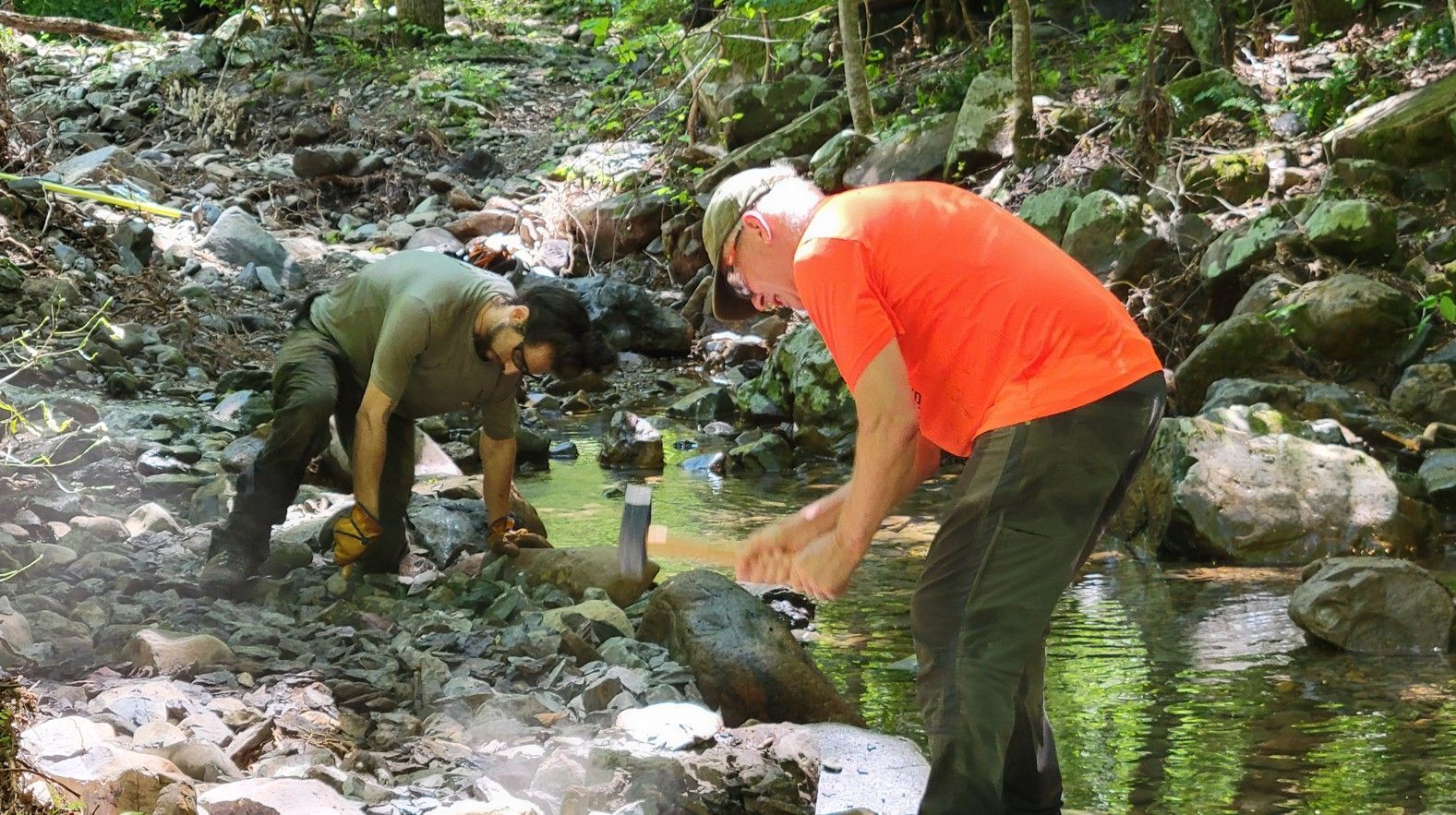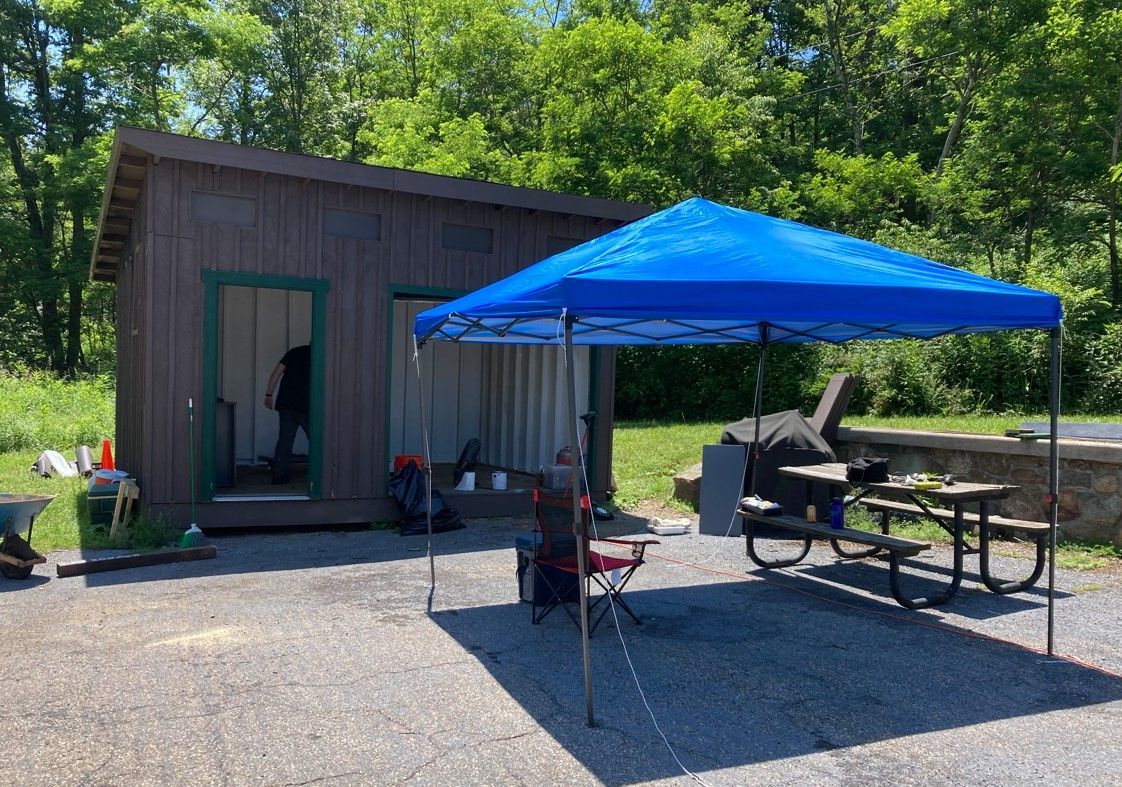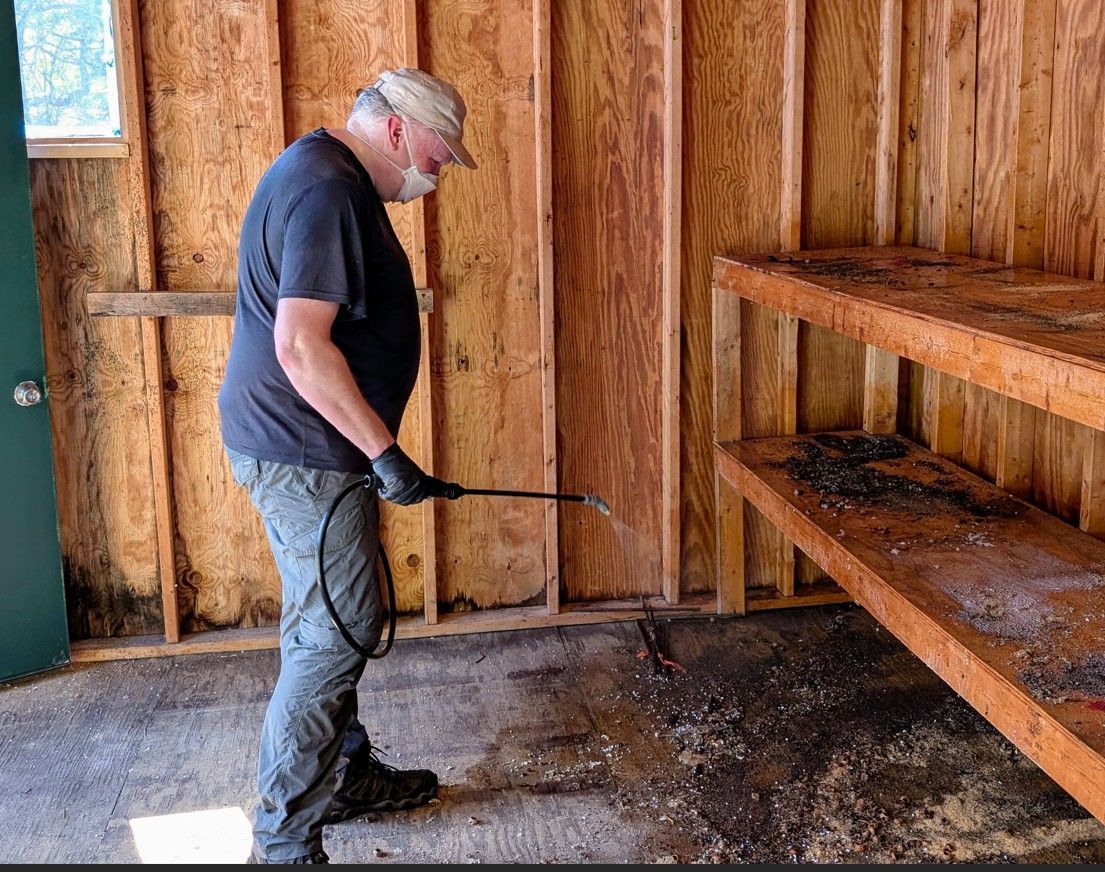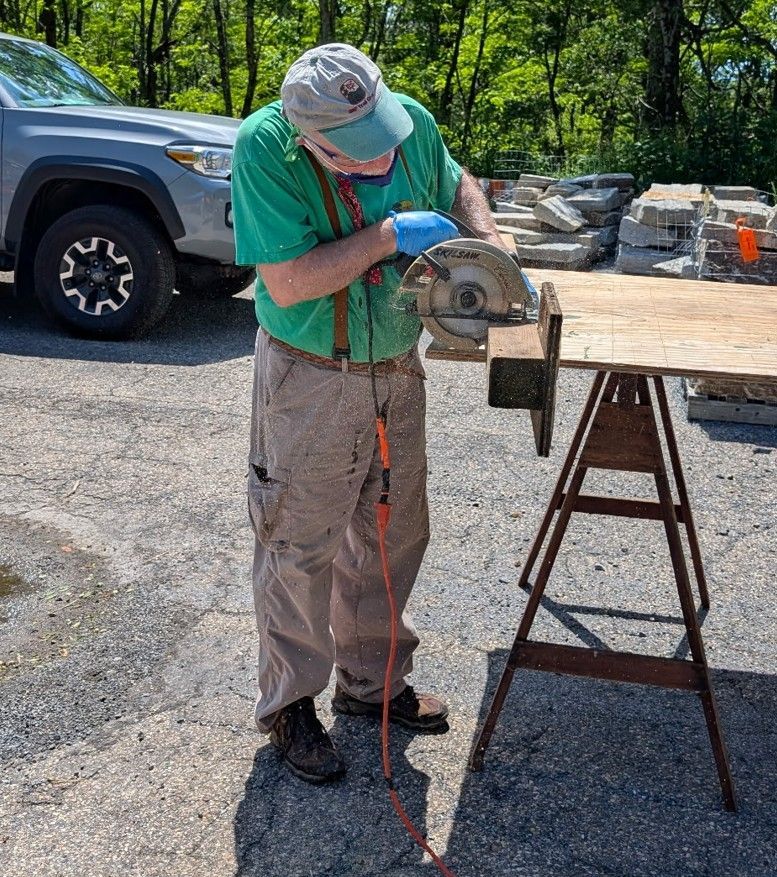North District Crew Week
By Tom Moran and Wayne Limberg
Crew weeks generally have two goals: first, tackle projects beyond the scope of individual maintainers and even weekend crews and second, give crew members the chance to work with park service crew and gain valuable on the job training. For a portion of the PATC crew these objectives were met fully.
To avoid the mid-summer heat, the 2025 Crew Week was moved to the week of June 23. But trying to guess the weather months ahead of time can be folly. While the Hoodlums June outing on the preceding Saturday had relatively mild conditions, the forecast for Monday–Friday was dire–code red on the first “good” days, then code magenta for the days following. While not air-conditioned, the Pinnacles Research Center, where the volunteer crew planned to stay, has ceiling fans in every room, and crew members brought other fans to help the air flow. Plus, Pinnacles sits at nearly 3,300 feet and generally gets an evening breeze. All these factors made the conditions tolerable, even cool on several evenings.
Still, the crew considered cancelling the work week. However, our NPS colleagues had a plan that had one PATC crew working in Jeremys Run for a couple of days, then another day in Buck Hollow Creek. Literally “in.” The cool waters of the mountain streams helped keep moderate temperatures and allow the joint crews to work. On Tuesday the 24th, for example, the temperature in nearby Luray was over 101, yet the temperature at the worksite in Jeremys Run stayed in the mid-80s.
The dire forecasts reduced the PATC crew turnout, but Dan Hippe, Tom Troutman, and Tom Moran decided to join a robust NPS crew on Monday at Jeremys Run to use boulders to build a stream crossing. The boulders were massive, but could be moved by leveraging grip hoists attached to adjacent trees. Once an appropriate site for steps was found, appropriate nearby boulders were identified and attached to the hoist cable and maneuvered into position in the stream. The boulder was then tested for stability and shimmed into place. Then, additional smaller rocks (20-50 lbs ea) were placed upstream to break the current and reduce the risk of flood damage. The first stream crossing took more than a day to settle six boulders into place.
The work area had been severely eroded by 2025 floods; much of the trail bed had disappeared in places. While a portion of the crew worked on the crossing, others built a raised footpath along the stream edge to redefine the trail and provide reasonable footing. To make a more permanent bed, a 20’ section was filled with rocks which were then crushed by hand using sledgehammers, a physically challenging task that should result in a more durable tread.
After two full days in Jeremys, the crew moved on to Buck Hollow, where storm flow had created risky stream crossings in two places. The crew successfully created safer crossings before calling it quits for the day. Heat and time considerations forced cancellation of plans to return to Jeremy’s Run so the joint crew effort was ended for the week.
Unsure of what the week would bring beyond sweltering temperatures, Noel Freeman and Wayne Limberg continued to work on the big shed at Piney River. With the mouse infestation under control, they removed old shelving and began painting the interior of the shed and filling holes and gaps in the siding, tasks which pretty much took the remainder of the week. Greg Foster joined them on Wednesday to help get them over the hump. Even with a canopy and fans it was hot work.
Each day also saw them driving down to Luray for building supplies and food for the crew. By Wednesday afternoon they had completed painting and Wayne had finished a workbench.

